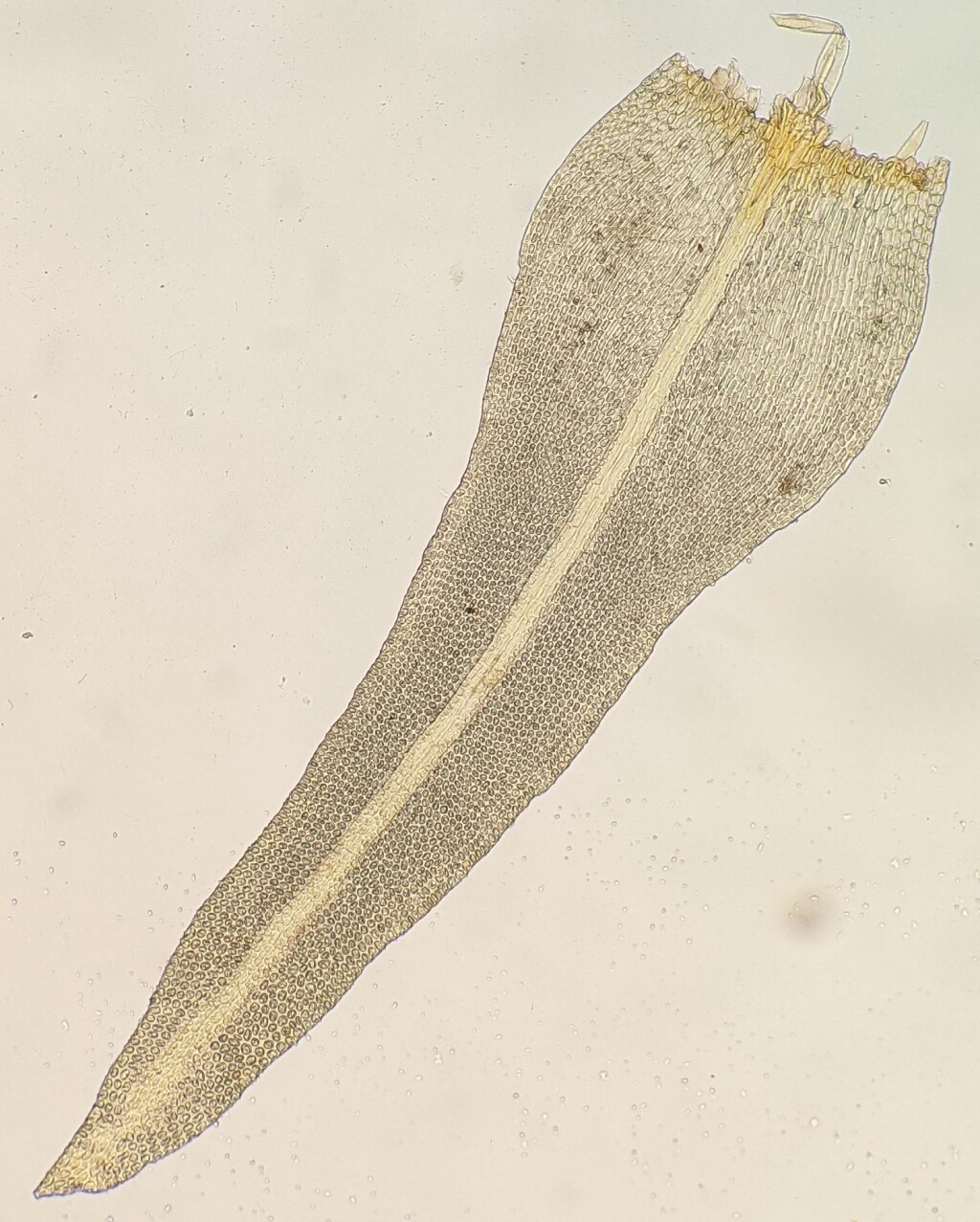Lewinskya
Goniautoicous. Asexual propagules almost always absent. Loose to dense cushions or tufts. Stems ascending to erect, usually branched. Leaves terete-foliate, monomorphic, erect-spreading to squarrose when moist, erect and appressed to erect-spreading and straight to contorted or crisped when dry; apex acute to acuminate, rarely obtuse (not in Victoria) or rounded (not in Victoria); costa usually subpercurrent; margin entire, plane (not in Victoria), recurved, undulate or rarely incurved (not in Victoria), without a border; laminal cells in apical half isodiametric or oblong, sometimes elongate, papillose or smooth (not in Victoria); basal laminal cells mostly elongate, incrassate, with rows of cells with nodulose and coloured walls between cells with hyaline and ± sinuose walls, smooth. Acrocarpous. Calyptra mitrate, slightly split at base to intact, hairy or rarely glabrous. Capsules immersed to long-exserted, smooth or 8-ribbed when dry; stomata superficial, generally in the middle of the urn, less frequently in upper and lower portions. Peristome double, single or rarely vestigial (not in Victoria); exostome of 8 pairs of teeth or 16 independent teeth, occasional vestigial (not in Victoria) or absent (not in Victoria), erect to reflexed when dry; endostome of 8 or 16 (not in Victoria) segments, or vestigial or absent.
66 species widespread through temperate to tropical areas but much more diverse in temperate regions (Lara et al. 2016); three species in Victoria.
Lewinskya was erected to accommodate autoicous species with superficial stomata that were previously included within Orthotrichum (Lara et al. 2016). Prior to the erection of Lewinskya, these species were segregated from Orthotrichum into the genus Dorcadion Adans. Ex Lindb. (Plášek et al. 2015). However, this name was illegitimate, which necessitated the erection of the replacement name Lewinskya. The broader circumscription of Orthotrichum presented by Lewinsky (1993), that includes both species with superficial and immersed stomata was shown by phylogenetic analyses of DNA sequences to be polyphyletic (e.g. Goffinet et al. 2004; Sawicki et al. 2010). These phylogenies showed Orthotrichum with superficial stomata likely to be closer related to Ulota than Orthotrichum with immersed stomata. There is also a cytological distinction between Lewinskya and Orthotrichum, with Lewinskya having the chromosome number n = 6 and Orthotrichum having the chromosome number n = 11 (Ramsay 1993).
 Spinning
SpinningGoffinet, B.; Shaw, A.J.; Cox, C.; Wickett, N.; Boles, S. (2004). Phylogenetic inferences in the Orthotrichoideae (Orthotrichaceae, Bryophyta) based on variation in four loci from all genomes. Monographs in systematic botany from the Missouri botanical garden 98: 270–289.
Lara, F.; Garilleti, R.; Goffinet, B.; Draper, I.; Medina, R.; Vigalondo, B.; Mazimpaka, V. (2016). Lewinskya, a new genus to accommodate the phaneroporous and monoicous taxa of Orthotrichum (Bryophyta, Orthotrichaceae). Cryptogamie, Bryologie 37(4): 361–382.
Lewinsky-Haapasaari, J.; Ramsay, H.P. (2006). Orthotrichum. Flora of Australia 51: 218–224.
Lewinsky, J. (1993). A synopsis of the genus Orthotrichum Hedw. (Musci, Orthotrichaceae). Bryobrothera 2: 1–59.
Plášek, V.; Sawicki, J.; Ochyra, R.; Szczecińska, M.; Kulik, T. (2015). New taxonomical arrangement of the traditionally conceived genera Orthotrichum and Ulota (Orthotrichaceae, Bryophyta). Acta Musei Silesiae, Scientiae Naturales 64: 169–174.
Ramsay, H.P. (1993). Chromosome studies on some Australasian Orthotrichaceae II. Ulota and Zygodon with additional studies on Orthotrichum, Schlotheimia and Macromitrium. Journal of the Hattori Botanical Laboratory 74: 183–192.
Sawicki, J.; Plášek, V.; Szczecińska, M. (2010). Molecular studies resolve Nyholmiella (Orthotrichaceae) as a separate genus. *Journal of systematics and evolution * 48: 183–194.
